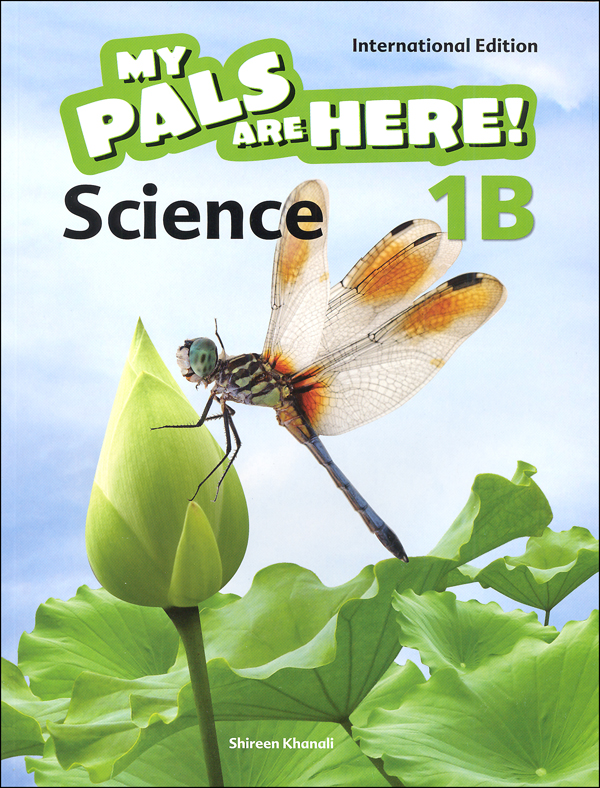My Pals Are Here! Science (MPH) just got a facelift. This Singapore Approach science curriculum has been revamped so it is more user friendly and transitions easier. MPH is now available for grades 1-6, and the format is more similar to the Singapore Approach math programs having parts A and B within an academic year. Every level now covers topics in the areas of life, earth & space, and physical science in an age-appropriate manner.
The program implements the BSCS (Biological Sciences Curriculum Study) E5 instructional model. This model has been shown to be one of the most effective strategies in science education today. The 5 Es in this model are engagement, exploration, explanation, elaboration, and evaluation, and every lesson is set up in this manner. Engagement makes a connection between past and present learning and cause students to think toward the current topic. MPH stimulates interest at the outset of each unit by showing an engaging picture and offering some thinking questions. Exploration develops concepts through hands-on activities - this is accomplished through the textbook and activity book of MPH. Explanation communicates information and offers opportunities for students to demonstrate their conceptual understanding. Elaboration is applying concepts in context and extending understanding through real-world application. Evaluation is the fifth E and provides opportunities for assessment of the student's understanding. MPH offers assessment in three different ways. 'At a Glance' is found at the end of each unit and is a concept map of the big ideas found in that unit. This offers students a chance to see a summary of what they just covered. 'Self-Check' is also found at the end of each unit and offers fill-in-the-blank exercises to summarize the chapter content. The third opportunity for evaluation is a bit more formal and can be used as semester assessments - the 'Revision Exercise.' This exercise includes a variety of question formats - short answer, multiple choice, completing charts, fill-in-the-blank, etc.
The textbook for each level includes colorful photography, illustrations, and textual information. Also included are 'flashbacks' which draw on previously learned material, and 'explores' which require a student to develop skills such as analyzing information, investigating for further facts, making inferences, and so on. 'That's Cool' informational boxes offer interesting facts that enhance the content for that section. 'At a Glance' and 'Self-Check' are found at the end of each unit in the textbook, along with a glossary of words for that unit.
The activity book begins with an explanation of the BSCS 5E, a concept map of process skills, an explanation of safety in the laboratory, and activities for each unit. Activities vary greatly and may include observation, labeling, drawing, short answer questions, coloring, charting, crossword puzzles, classifying, circling answers, etc. Activities may include items that are easily accessible and others may require items that are more specialized. You may have to skip certain activities or substitute accordingly. Each activity is easy to follow and lists the aim or objective of the activity, materials needed, procedures, observations, questions, and conclusions. These books are the only consumable portion of the curriculum, so this is the only part of the program you would need to replace for multiple students.
The Teacher Guide offers an overview of the book and how to use it, an explanation of process skills and BSCS E5 model, table of contents with learning objectives, pacing schedules for every unit and a place for notes. The pacing guide or schedule includes page references for lesson plans, textbook and activity book, the number of periods to be used for each lesson, objectives, process skills, and resources. Each unit is divided into lesson plans, which contain all of the instruction, learning objectives, and teaching suggestions to complete the 5 Es of instruction. Small format student text and activity book pages are surrounded by teaching and activity suggestions. Answers are included for the activity book, revision exercises, and self-check exercises. The Teacher Guide includes some information that isn't found in the student text, so it plays an important role in the teaching of this course.
Although this series has been revised and is much easier to use, the curriculum is still written with metric measurement (no English measure) and C° rather than F°. There are also references to items that may not be easy to get, such as Duckweed (a water plant), or quail eggs (you may substitute chicken eggs). Some of the language used may also seem unfamiliar since the publisher does use European spellings for words like 'analyse' and groundnut (peanut). Overall, the curriculum is easier to use, more comprehensive, and more engaging for elementary students. There is currently no correlation to US standards for this curriculum; however, it has performed well in science testing in the international arena. ~ Donna


